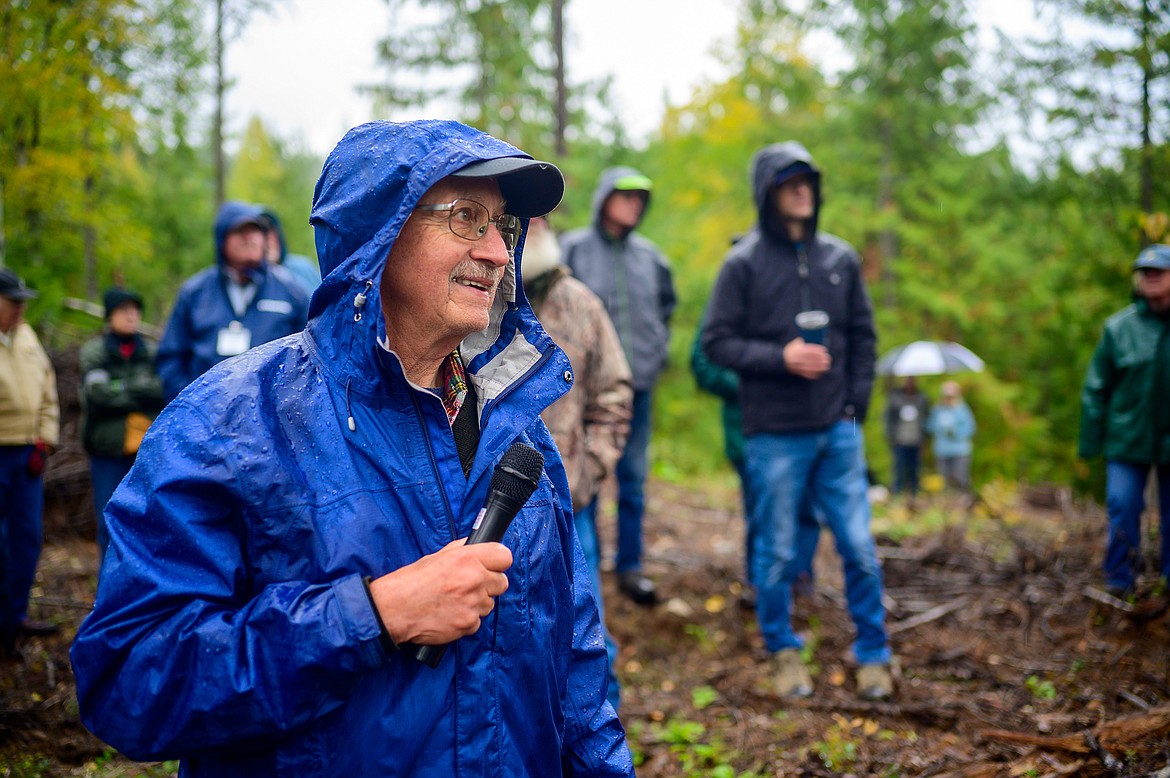He's a farmer ... of trees, and he's not alone
Braving the rain and cold, about 100 people recently took a walk in Ed Levert’s Flathead valley woods. Levert’s woods is no ordinary plot of ground — it’s managed under the Montana Tree Farm guidelines. The folks touring the 158-acre acre parcel were fellow tree farmers, hoping to glean a thing or two about how best to manage the woods for timber, wildlife and diversity.
Levert began managing his stand about 20 years ago, thinning here, planting there, sometimes with great success, sometimes not so much.
In places that were thinned decades ago, the trees have grown faster and the brush has also done better, Levert told the group.
Brush in the form of huckleberries, that is.
“We have a whole different shrub component,” he said. “The grizzlies like it, and so do the people who come and pick them.”
The woods is diverse place, with cedar, larch, paper bark birch and Douglas fir the dominant species. Levert does plantings after a harvest, but there’s plenty of natural growth as well. In some roadways, for example, young cedar trees sprout up like weeds. He said he likes to get his stock from suppliers in Idaho, the young trees from nurseries there seem to do better. The woods is unique for the Flathead in that it does grow a lot of cedar, he noted, a tree that’s surged in market value in recent years.
Levert has also been planting sapling white pines. White pine is a coveted species for both wood and wildlife, but populations were decimated by blister rust, a fungus that was imported into the U.S. from Asian wood imports decades ago.
Today, he plants rust-resistant trees, with the hopes that they’ll be viable in the future.
Levert pointed out several different harvest methods. One area featured a small (five acre) clearcut, another featured a seed tree unit, where select large “seed trees” are left behind and the rest of the land is cleared. Other units had selective thinning.
The hope, Levert said, is to have a modest harvest of trees every five to 10 years.
Not all the land is created equal, Levert has had trouble growing trees on a rocky patch, despite numerous planting attempts. He’d also like to use prescribed burns as a management tool, but liability issues with surrounding landowners make that difficult. If the fire were to get away, he’s be liable.
The land is protected from subdivision through a conservation easement with Vital Ground, a Montana-based non-profit looks to conserve grizzly bear habitat. The land is bordered on three sides by Forest Service and to the south by another private landowner.
The tour was part of the Montana Tree Farm Association’s annual meeting held in Columbia Falls Oct.5. Montana has about 500 certified tree farms consisting of 162,000 acres across the state. Part of the meeting is touring other tree farms.
The association is in its 75th year. The tree farm system advocates active and sustainable management of private forests across the state, managing not just for timber, but for wildlife, recreation, clean air and water.
For more information on the association and requirements for tree farms, visit https://www.treefarmsystem.org/montana



